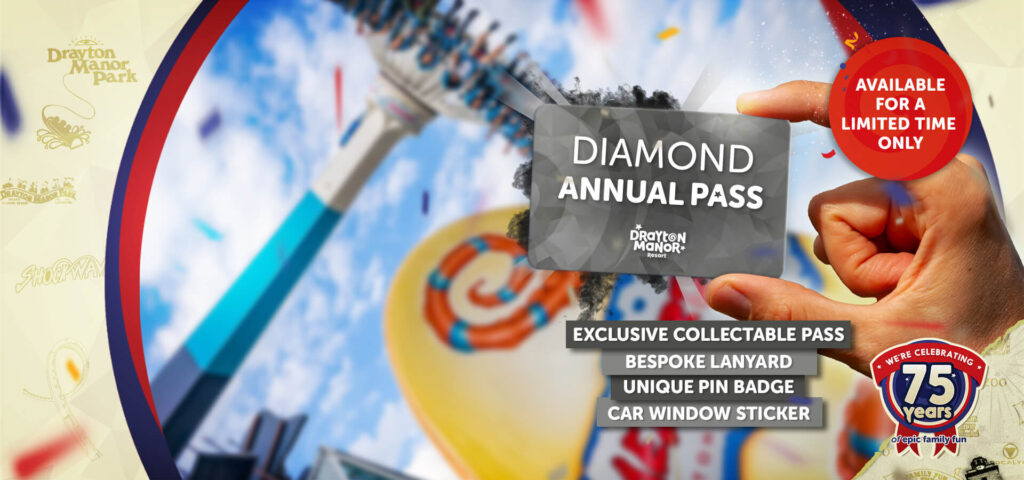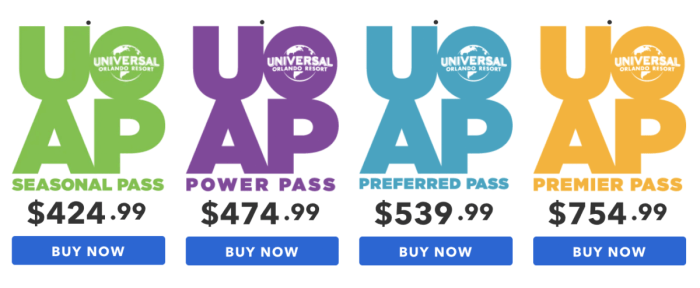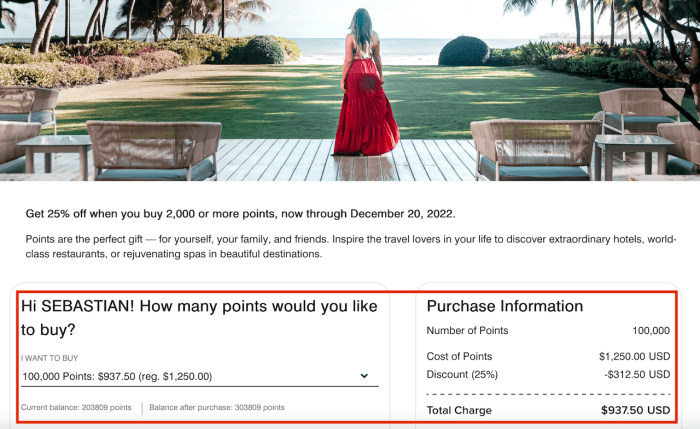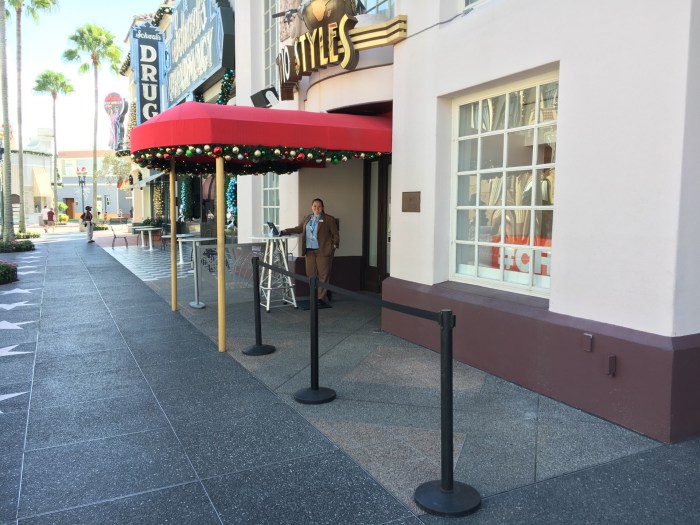Universal Annual Pass Hotel Discount Unveiling Perks
Universal annual pass hotel discount programs offer exclusive benefits for frequent travelers. These programs often provide significant savings across various hotel segments, from budget-friendly options to luxurious accommodations. Understanding the nuances of these discounts, the target audience, and the program’s potential impact is crucial for hotels and customers seeking value.
This exploration delves into the specifics of universal annual pass hotel discounts, examining different program structures, target customer demographics, and marketing strategies. We’ll also analyze the potential revenue and costs, alongside the technological considerations required for a successful implementation. By examining both the benefits and drawbacks, a clearer picture emerges of the potential of such programs in the competitive hotel industry.
Understanding the Offer
A universal annual pass hotel discount program provides a special rate or benefit to holders of a yearly pass for various attractions or activities. This often extends to discounted lodging at participating hotels. This allows passholders to save money on accommodation while enjoying their pass-associated experiences.
A “universal annual pass” typically grants access to multiple attractions or experiences within a region or across different locations. The hotel discount, often a part of this package, provides an added incentive to purchase the pass. This mutually beneficial arrangement allows hotels to attract a wider customer base while passholders save on lodging costs.
Types of Hotels Offering Discounts

Hotels of various categories and price points may participate in a universal annual pass discount program. This could include everything from budget-friendly chain hotels to luxury resorts. The program’s success often depends on the type and diversity of hotels included. Hotels that cater to tourists and those in regions frequented by passholders are most likely to participate.
Discount Structures
The discount structure for a universal annual pass hotel discount can vary. Common methods include percentage-based discounts, fixed amount discounts, and point-based systems.
- Percentage-based discounts: A predetermined percentage is applied to the standard hotel room rate. For instance, a 15% discount on all room types. This is straightforward to understand for customers.
- Fixed amount discounts: A set amount is deducted from the room rate. For example, a $50 discount per night for all passholders. This is a clear and consistent saving for the passholder.
- Point-based systems: A system where points earned through the annual pass can be redeemed for discounts on hotel rooms. For example, 1000 points equal a $50 discount. This adds another layer of incentive and rewards passholders for continued use of the pass.
Benefits of the Universal Annual Pass for Hotels
A universal annual pass program offers numerous benefits to hotels.
- Increased Revenue: The program attracts new customers, particularly those seeking value and bundled experiences, potentially increasing overall hotel revenue. This is particularly true for hotels in areas with high tourism activity.
- Enhanced Customer Loyalty: Hotels that offer discounts to passholders often see increased customer loyalty. Passholders are more likely to choose a participating hotel for their stay.
- Improved Marketing: The program provides an effective marketing tool, as the annual pass holder promotes the hotel through word-of-mouth or social media sharing. This can generate a positive buzz and improve the hotel’s online presence.
Potential Drawbacks or Limitations
While a universal annual pass hotel discount program has numerous advantages, there are potential drawbacks.
- Limited Reach: The program’s success depends on the participation of enough hotels in the region to provide a meaningful choice for the passholder.
- Reduced Profit Margins: Discounts can potentially reduce profit margins on hotel rooms, which need to be carefully balanced with the increase in overall revenue and customer base.
- Complexity in Management: Managing the program’s complexities, including tracking passholders, coordinating discounts, and ensuring smooth operations across multiple hotels, requires a well-defined system.
Target Audience and Market Analysis
This section delves into the characteristics of the ideal customer for a Universal Annual Pass Hotel Discount program. Understanding their motivations and preferences will inform the marketing strategy and ensure the program resonates with the target audience.
A comprehensive analysis of the hotel industry and its competitive landscape is crucial to understanding the potential impact and success of the discount program. Comparing this program with existing loyalty programs will also highlight its unique selling points.
Typical Customer Profile
The target customer is a frequent traveler with a strong interest in theme parks and attractions, and a desire for cost-effective travel solutions. They are likely to be families, couples, or groups of friends seeking affordable accommodations that complement their park visits. These customers value convenience, value-for-money, and streamlined experiences.
Demographic and Psychographic Analysis
The demographic profile includes a wide range of ages, but a significant portion will be families with children of varying ages. The psychographic profile often involves individuals with a passion for entertainment, adventure, and shared experiences. They are likely to be active, engaged, and value creating lasting memories. Further, they may prioritize flexibility and options within their travel plans.
Motivations for the Target Customer
The key motivators for this target audience include cost savings, convenience, and the opportunity to combine park visits with hotel stays. They seek bundled deals that maximize their travel value. The ability to reduce overall travel costs and enjoy more time in theme parks and hotels are crucial motivator.
Hotel Industry Overview and Competitive Landscape
The hotel industry is highly competitive, with various segments catering to different needs and budgets. Luxury hotels offer premium services and amenities, while budget hotels focus on affordability. Boutique hotels provide a unique and personalized experience. This competitive landscape presents an opportunity for the Universal Annual Pass Hotel Discount to stand out by offering a compelling value proposition.
Comparison with Other Loyalty Programs
The Universal Annual Pass Hotel Discount program differentiates itself by offering a direct benefit to annual pass holders, rather than a generalized loyalty program. This targeted approach is more likely to attract the desired customer base and encourage consistent engagement with the hotel partners.
Hotel Segment Responses to the Discount
| Hotel Segment | Potential Response | Target Customer | Marketing Strategy |
|---|---|---|---|
| Luxury Hotels | Positive; potentially increase revenue from a new customer segment, potentially enhance brand image | High-income families, couples, and solo travelers seeking upscale experiences | Highlight the exclusive nature of the discount, partner with premium travel agencies, emphasize exceptional service and amenities |
| Budget Hotels | Positive; significant increase in occupancy and revenue, attracts new customers | Families on a budget, budget-conscious travelers, and groups | Promote the affordability of the discount, emphasize the convenience and value, and use social media campaigns |
| Boutique Hotels | Positive: attract a niche customer segment, build brand awareness | Couples, travelers seeking unique experiences, and individuals who enjoy independent travel | Showcase the unique atmosphere and experiences of the hotel, emphasize the exclusive nature of the partnership, and utilize targeted marketing campaigns |
Program Design and Implementation

This section details the structure and implementation of a Universal Annual Pass Hotel Discount Program. It articulates the program’s design, implementation steps, promotion strategies, and technical considerations. This program aims to provide an attractive incentive for annual pass holders, driving increased hotel bookings and enhancing the overall guest experience.
The program’s success hinges on a clear structure, effective implementation, and strategic promotion to target audiences. Thorough planning and meticulous execution are crucial for maximizing participation and achieving the desired outcomes.
Program Structure
This program offers a tiered discount structure based on the duration of the stay and the number of nights booked. Annual pass holders can receive a percentage-based discount, increasing with the length of their stay. This approach encourages longer stays and potentially higher revenue for the hotel partners.
Implementation Steps
- Negotiation with Hotel Partners: Secure agreements with participating hotels, defining discount percentages, eligibility criteria, and any specific terms and conditions. This step involves communication, contract negotiation, and outlining the scope of the program for mutual benefit.
- Development of a Dedicated System: Establish a system to track and manage reservations, ensure eligibility, and calculate discounts automatically. This may involve integrating with existing reservation platforms or developing a new system tailored to the program’s needs.
- Communication and Promotion: Announce the program to annual pass holders through various channels, such as email, in-app notifications, and dedicated landing pages. Highlight the benefits and make it easy for customers to understand and utilize the offer.
- Testing and Refinement: Thoroughly test the system to identify and resolve any potential issues. Gather feedback from annual pass holders to fine-tune the program’s effectiveness and address any concerns.
- Ongoing Monitoring and Evaluation: Continuously monitor the program’s performance, track key metrics, and adapt the program based on data insights. Regularly review participation rates, booking trends, and feedback from both annual pass holders and hotel partners to maintain program effectiveness.
Discount Structure Comparison
| Discount Structure | Description | Pros | Cons |
|---|---|---|---|
| Tiered | Offers increasing discounts based on stay duration and number of nights. | Encourages longer stays, potentially higher revenue, and rewards frequent customers. | More complex to manage, potentially less appealing for short-term stays. |
| Fixed | Provides a uniform discount percentage regardless of stay length. | Simple to manage, straightforward for customers to understand. | May not incentivize longer stays, potentially lower revenue compared to tiered, and could reduce the overall appeal for frequent visitors. |
Flow Chart: Obtaining and Utilizing the Discount
(A visual representation, not included in text format, would illustrate the steps from booking a hotel to receiving the discount. This would show the flow of information between the annual pass holder, the hotel reservation system, and the program management system.)
Promotion Methods
- Targeted Email Campaigns: Send personalized emails highlighting the program’s benefits and showcasing participating hotels.
- Social Media Marketing: Promote the program on relevant social media platforms, including engaging posts and advertisements.
- In-App Notifications: Inform annual pass holders about the discount program through push notifications within the app.
- Dedicated Landing Page: Create a specific webpage for the program, providing details, terms, and conditions, and facilitating easy booking.
Technical Aspects
The technical aspects of managing the program involve integrating with existing reservation systems, implementing a discount calculation engine, and creating a system for tracking and managing program participants. This may involve API integrations, database management, and user interface design to ensure seamless and efficient program operation.
Marketing and Promotion Strategies: Universal Annual Pass Hotel Discount

Effective marketing is crucial for the success of the Universal Annual Pass Hotel Discount program. A well-executed marketing strategy will generate awareness, drive demand, and ultimately maximize participation in the program. This involves a multifaceted approach targeting the identified target audience with tailored messaging across various channels.
A comprehensive marketing strategy ensures that the program is presented compellingly, highlighting its value proposition for both Universal Park guests and potential hotel partners. This approach not only attracts new customers but also fosters loyalty and encourages repeat participation.
Importance of Effective Marketing
The Universal Annual Pass Hotel Discount program, while offering a compelling value proposition, requires significant marketing efforts to reach the intended audience. Targeted marketing ensures the program’s benefits resonate with potential customers and partners. Effective communication across various channels builds anticipation and reinforces the program’s value. This fosters trust and encourages participation.
Attracting Customers to the Program
Several strategies can attract customers to the program. These include leveraging social media campaigns, targeted email marketing, partnerships with travel agencies, and collaborations with complementary businesses. Utilizing a variety of promotional channels increases visibility and broadens the reach to potential customers. Incentives, such as early bird discounts or exclusive offers, can motivate early adoption.
Social Media Promotion
Social media platforms are vital for promoting the Universal Annual Pass Hotel Discount. Creating engaging content, including visually appealing graphics, videos, and interactive posts, is essential to attract attention. Running contests and giveaways, collaborating with travel influencers, and utilizing targeted advertising on platforms like Facebook and Instagram can drive participation. Utilizing relevant hashtags and engaging with comments and messages is crucial for fostering community and driving awareness.
Public Relations and Media Outreach
Public relations and media outreach can significantly enhance the program’s visibility. Press releases announcing the launch, partnerships with travel publications, and collaborations with travel bloggers can generate media coverage and raise awareness among the target audience. A well-crafted media kit providing comprehensive information about the program can aid in media engagement. Press conferences or events can create significant buzz and attract media attention.
Marketing Campaign Types
Various marketing campaign types can be implemented to promote the program. A “launch campaign” focused on generating initial excitement and driving early adoption is one option. “Seasonal campaigns” tied to specific holidays or events can increase interest during peak travel times. “Partnership campaigns” with complementary businesses can expand the program’s reach. Content marketing, such as blog posts and articles highlighting the benefits of the discount, can educate potential customers.
Marketing Channel Effectiveness
| Marketing Channel | Description | Effectiveness | Cost |
|---|---|---|---|
| Social Media | Engaging content, targeted advertising, influencer collaborations, contests, and community building on platforms like Facebook, Instagram, and Twitter. | High, especially for reaching younger demographics, can be very cost-effective with organic reach. | Variable, depending on paid advertising investment. |
| Email Marketing | Targeted email campaigns to existing customers and potential leads, highlighting program benefits and special offers. | High, for nurturing leads and driving conversions. | Low to moderate, depending on email list size and marketing automation tools. |
| Search Engine Optimization () | Optimizing website content and online presence to rank higher in search engine results and increasing organic traffic. | Medium to high, particularly for long-term visibility. | Low, requiring ongoing effort for content creation and optimization. |
| Paid Advertising (PPC) | Utilizing targeted ads on search engines (Google Ads) and social media platforms to reach a wider audience. | High, for immediate reach and targeted traffic. | Moderate to high, depending on ad spend and bidding strategies. |
Potential Revenue and Cost Analysis
A comprehensive understanding of potential revenue and associated costs is crucial for the success of the universal annual pass hotel discount program. Accurate projections allow for informed decision-making regarding pricing strategies, marketing efforts, and overall program viability. This analysis will detail anticipated revenue streams, associated expenses, and methods for assessing program profitability.
Estimating Potential Revenue, Universal annual pass hotel discount

To estimate potential revenue, we need to project the number of annual pass holders who will also utilize the hotel discount. Factors like current annual pass sales, historical hotel occupancy rates, and anticipated marketing effectiveness are vital inputs. For example, if we anticipate 10,000 annual passholders to utilize the hotel discount at an average rate of $150 per stay, the projected annual revenue from this segment would be $1,500,000. This is a simplified calculation, and a more detailed model will account for variations in stay duration and room types.
Identifying Potential Costs
Several costs are associated with implementing and maintaining the hotel discount program. Administrative costs include personnel for managing the program, processing reservations, and handling customer inquiries. Marketing expenses are necessary to promote the program to potential customers. Additional costs might include transaction fees, potential customer service support, and any contractual obligations with the hotels.
Profitability Analysis Models
Various models can be used to analyze program profitability. A break-even analysis identifies the point at which total revenue equals total costs. A sensitivity analysis explores how changes in key variables (like pricing or occupancy rates) affect profitability. A discounted cash flow (DCF) analysis calculates the present value of future cash flows, which is crucial for evaluating long-term program viability.
A robust profitability analysis model should incorporate all direct and indirect costs associated with the program, including administrative overhead, marketing expenditures, and potential losses from unexpected circumstances.
Return on Investment (ROI) Calculation
The ROI is calculated by dividing the net profit by the total investment. A high ROI indicates a successful program. For example, if the program generates a net profit of $500,000 and the total investment is $200,000, the ROI is 250%. A clear understanding of the initial investment and projected revenue and costs over a period is essential for accurately calculating the ROI.
Case Study: Similar Program Success/Failure
A successful example could be the “Resort Rewards” program of another theme park, which offered discounted lodging to annual pass holders. This program demonstrated a substantial ROI within the first year due to aggressive marketing campaigns and a clear understanding of customer preferences. Conversely, a failed program might be one that didn’t adequately consider the competitive landscape or failed to communicate the program’s benefits effectively.
Projected Revenue and Expenses (3-Year Period)
| Year | Projected Revenue | Projected Expenses | Profit/Loss |
|---|---|---|---|
| Year 1 | $1,500,000 | $500,000 | $1,000,000 |
| Year 2 | $1,800,000 | $600,000 | $1,200,000 |
| Year 3 | $2,100,000 | $700,000 | $1,400,000 |
Technological Considerations

Source: wdwnt.com
Implementing a successful universal annual pass hotel discount program requires robust technological support. This ensures smooth operations, secure data handling, and a positive customer experience. A well-structured technological framework will be critical for the program’s long-term viability and growth.
Effective management of the program relies heavily on the right technological tools and platforms. Choosing the appropriate systems and integrating them seamlessly will streamline the entire process from initial application to final redemption.
Required Technological Tools and Platforms
A comprehensive suite of tools is necessary to effectively manage the program. This includes a robust reservation system capable of handling high volumes of bookings and managing inventory accurately. Integration with the hotel’s existing property management system (PMS) will ensure data consistency and prevent errors. Additionally, a dedicated portal for passholders to access their benefits, manage bookings, and track rewards will enhance the customer experience. A reliable customer service platform to address inquiries and resolve issues will also be essential.
Data Security and Privacy
Protecting sensitive data is paramount. Implementing robust security measures, such as encryption and access controls, is crucial to safeguarding customer information. Adherence to data privacy regulations, such as GDPR, is mandatory. Regular security audits and penetration testing will help identify and mitigate potential vulnerabilities. Transparency in data handling practices will build trust with customers.
Technical Infrastructure
The technical infrastructure needs to be scalable to handle anticipated growth. High-speed internet connectivity and reliable server infrastructure are essential to prevent disruptions during peak demand periods. Redundancy in critical systems will ensure business continuity in case of outages. Cloud-based solutions offer flexibility and scalability, allowing for easy adjustments as the program evolves.
Customer Relationship Management (CRM) Systems
A CRM system will be instrumental in managing customer interactions and data. This will allow for personalized communication, targeted promotions, and improved customer service. Tracking customer preferences and past interactions will enable the program to offer relevant and valuable discounts, potentially driving repeat business. The CRM system should be integrated with other relevant systems for a unified customer view.
Payment Processing Options and Security
Several payment processing options should be available, including credit cards, debit cards, and potentially mobile payment solutions. Secure payment gateways with strong encryption protocols are vital to protect customer financial information. Regular updates to security software and adherence to industry best practices are necessary to maintain a secure payment environment. Implementing fraud detection mechanisms will minimize the risk of unauthorized transactions.
End of Discussion
In conclusion, a well-structured universal annual pass hotel discount program can create significant value for both hotels and customers. By understanding the diverse needs of different hotel segments and tailoring the program accordingly, hotels can attract loyal customers while boosting revenue. Successful implementation requires careful planning, effective marketing, and a keen understanding of the technological aspects of managing such a program. The potential ROI and the advantages of a comprehensive approach are key to the success of this strategy.




